Day 0: The Hair Transplant Procedure
I showed up just before 7 AM at the Beverly Hills office. I checked in and signed a form that allows Bosley to take a small, 'fresh scalp' sample for research and I get $100 back. Bosley is currently trying to clone hair so that in the future only a small sample will need to be taken from a person instead of a long strip. I figured that since they were already in there, they could have it.
I was taken back to my room for the day. There was a reclining chair similar to one in a dentist's office. A flat panel TV was right in front of it and 4 microscopes were located around the edge of the room.
I now understand why the costs for this procedure are so high. There was a doctor, David Deutsch, a registered nurse, and 4 medical assistants. The roles are very well defined and they worked together like a well-oiled machine.
To start, I was given Methylprednisolone. A second dose was given at lunch time.
First, Dr. Deutsch came in and sketched a hairline on my head. He also marked the donor area on the back of my head.
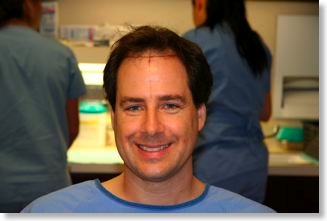
A collar was then put on to prevent any fluids/blood from dripping down past my neck.
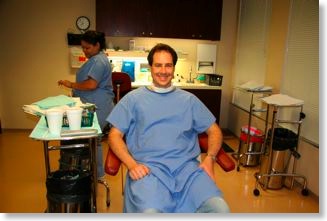
Next, my hair was tied up in 3 pigtails.
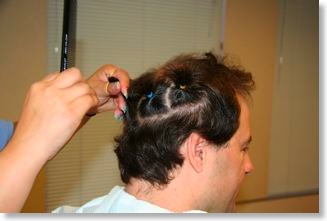

The donor area was trimmed very short.
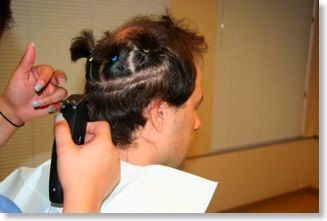
The RN then started with the local anesthesia. This was the only painful part of the process (5 out of 10). It started with 3 rows of about 10 injections along the donor area to numb the entire area. Some people can tolerate pain but I'm not one of them. I let out a couple of screams in there. Once numb, all was good. The doctor then came in to remove the donor strip.
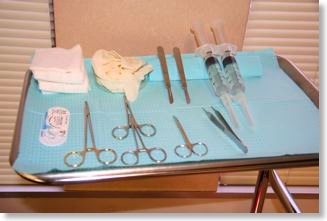
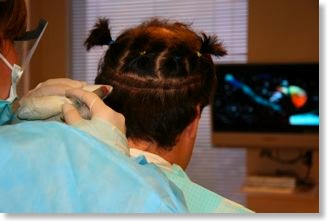
The 'headband' is there to prevent any fluids/blood from running down into my face. It was there for the entire procedure.
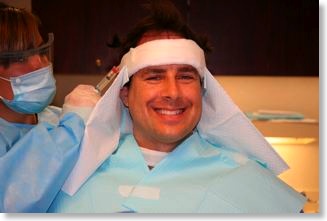
For those of you that have had surgeries under local anesthesia before, this is probably old hat to you. During the removal of the strip, every cut sounded like crunching. It was a bit unnerving but it was over in about 10 minutes. Two sutures, were put in to tie everything up. During this short process, the doctor brought in an iPod and asked what I wanted to listen to. We listened to Beethoven's Moonlight Sonata and Fur Elise and he was done. This picture show everything sewn up. It was very clean.
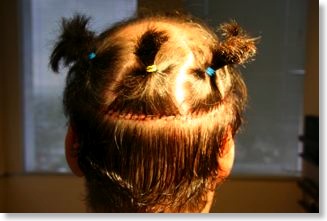
Now the tedious work started. The medical assistants took the strip of hair and started to separate it under the microscopes. They were sorting it into one hair, 1-2 hair, and 3-4 hair follicles. The low number hairs go along the hairline while the denser follicles go towards the inside. It took several hours to do this separation.

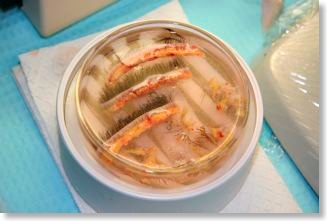
At around 11:30 AM, the RN numbed up my whole head the same way she did the back. Again, it was painful but only for a few minutes.

Now the fun starts. The doctor used an instrument that looks like a miniature spear to place the openings for the new hair. He used a stabbing motion as the assistants counted the number of punctures all the way up to 3000. I asked the doctor what that crunching sound was followed by a solid thunking sound. He said the crunching is the puncturing of the skin and the thunking is the point hitting the skull. The only way I can describe the crunching sound is it sounds the way I would think a termite eating wood would sound under intense amplification. Nobody else could hear it but me.
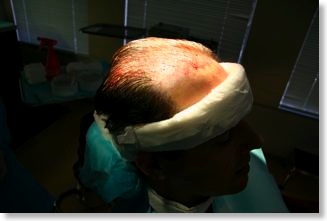
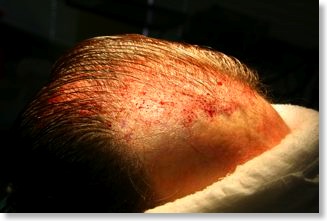
Once that was over, a movie was put on while the medical assistants proceeded to place the hairs in the newly created slits. They were done with all 3000 a few hours later at 3:30 PM. They were very efficient. The doctor came in occasionally to inspect the work and praised them on the good job they did.
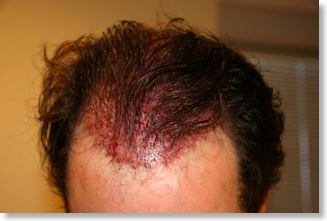
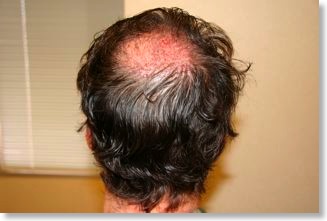
One of the perks for having this done is that I got a great hat out of it. I like to think of it as 10-gallon ball cap. I was told that I must wear a hat for the next 3 months if I am outside more than 15 minutes to avoid freckles at each of the transplant locations.
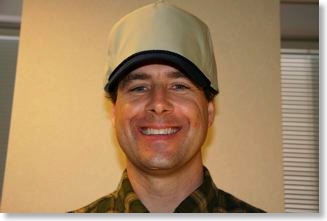
I left the office at 4 PM and got home at 5:30 PM due to LA rush hour. I was exhausted but still numb so no pain. I took a Vicodin around 6 PM and again around 10 PM before bed. I hope I feel good tomorrow. We'll see...
Initial Consultation
Today I went in for my free consultation in the Beverly Hills office. I met with Frank Richards, a Senior Counselor with Bosley, who filled me in on all the details of why men lose their hair, where my hair loss was on their scale of 1 to 7, and what my options were.
DHT, or Dihydrotestosterone, is what causes hair loss in men who have been unfortunate enough to have inherited the genetic susceptibility to hair loss. In general, the hair on top of your head is affected by DHT but the sides and back are not. That is why you see many bald people who are only bald on top and not around the sides or back. The good thing about having DHT-resistant hair on the back and sides of your head is that you can move this hair to the top and it will continue to grow normally.
So how does my hair rate on the Bosley scale? It is gone in the back and receding fast in the front so I was around a 4 in the front and a 5 in back.
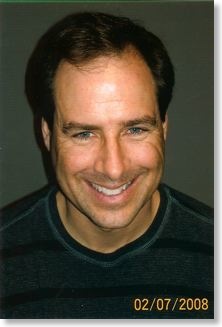
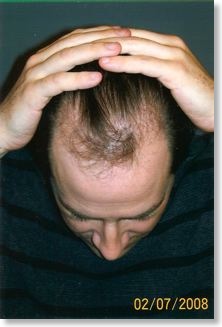
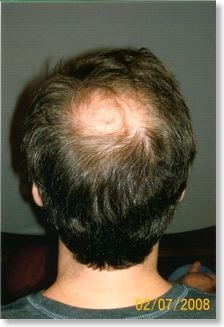
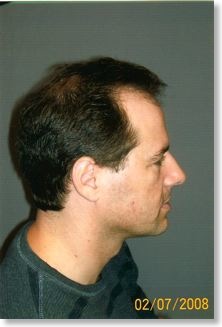
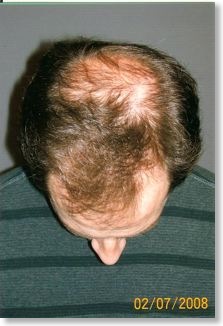
Here is the chart showing the Norwood-Hamilton scale that Bosley uses.
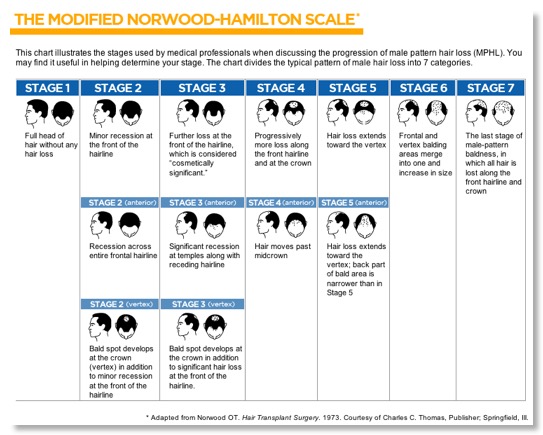
Dr. David Deutsch then came in for a consultation with me. We discussed the same things that I sopke with Frank about and we got into a little more detail on my options.
The options given to me were
Mens Rogaine, Propecia, laser light, and hair transplant. I explained to Frank and Dr. Deutsch that I had used
Mens Rogaine
and it seemed to grow my hair back when I was in my late 20s but the last time I used it about a year ago, it didn't seem to be doing me any good. I also didn't like the idea of having to put something on or take a pill every day for the rest of my life. That ruled out Propecia too. One option I tried about 2 years ago was laser light. For one year I sat under a hemisphere that looked like a hair dryer. Red lasers would pulse for a 20 minute session while I sat and read a book. I did this twice a week for a year and I didn't notice any growth or slowing down of my hair loss. Dr. Deutsch explained that the laser light only has the effect of retarding the loss but it won't stop it completely.
That was when the clear option to me and them was the hair transplant.
To make sure I was a good candidate, Dr. Deutsch checked the back of my head for hair density which he said was very good. He also grabbed the hair in back and moved it up and down to check the elasticity of my skin. During the procedure a strip of skin is removed and he wanted to make sure it would be easy to close up. He said my elasticity was very good. I asked him how many grafts it would be and he said 3000 would be good. 3000 is about as much as they can do in one day. Dr. Deutsch asked when I would like to schedule an appointment which is when pricing came up. He left the room so Frank could go over pricing with me.
Getting a hair transplant is not an inexpensive proposition but it was the best option for me as nothing else was working and this is a permanent solution. Bosley has a graduated scale that starts at $9 per graft and goes down to $5.50 per graft. Due to the number of grafts I would be getting, I would be in the $5.50 per graft category which brought my base price to $16,500. Luckily, they offer financing through Capital One so I signed up for a 12 month, 0% interest payment plan.
My procedure is scheduled for March 14th.